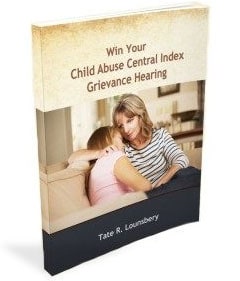Bruising Patterns Suggestive of Child Abuse
As children walk, play, or run, they are relatively accident-prone. Consequently, the occasional scratch, scrape, or bruise is very common, especially as they become increasingly mobile and adventurous. There are, however, instances where bruises are indicative of non-accidental injury.
Accidental bruises in children tend to follow a familiar pattern, while non-accidental bruising inflicted by another person often follows a different pattern. In alleged child abuse cases, bruising patterns taken with the context of other injuries and over time may indicate accidental or non-accidental bruising.
Let’s review some interesting points about bruising in childhood, taken from the following article: S. Maguire, MK Mann, J. Sibert, A. Kemp. Are there patterns of bruising in childhood which are diagnostic or suggestive of abuse? A systematic review. Archives of Disease in Childhood 2005;90:182-186.
As you read this, keep in mind that most medical professionals and child abuse investigators consider the label “non-accidental bruising” as synonymous with “child abuse.” Likewise, in the world of child abuse investigations among medical and government authorities, the word “inflicted” is often used as a substitute for “non-accidental,” aka “child abuse.” While that is legally incorrect, for our purposes here we will adopt the use of the “non-accidental” moniker in order to accurately reflect what the authors of the above paper wrote.
Typical Accidental Bruising PatternsNormal accidental bruising in children follows a relatively consistent trend that changes as children grow up. Babies who are not yet mobile less regularly present with bruising. When children begin to crawl and later walk as they develop motor skills, they bruise more often, but only with a small bruise or two on occasion. These bruises are mostly in bony places (in 93%+ of cases) and on the front of the body. They are often attributed to falls and forward motion. The most common bruises are found on the shins and lower legs in walking children over 18 months old and under the age of ten.
Non-Accidental Bruising PatternsOne study suggests that as few as 28% of children who have been deemed to be abused school-age children with injuries also present with bruising. By contrast, another showed that 92% of children in suspected child abuse cases had soft tissue injuries, and 62% of those injuries were bruising.
Child protective services social workers are taught that the following bruising patterns typically suggest that physical child abuse may be involved:
- Bruising in babies
- Bruising in children without independent mobility
- Multiple bruises (in clusters)
- Multiple bruises (with similar shapes)
- Bruises found on the face, back, trunk, buttocks, ears, arms or hands
- Bruises found away from bony prominences (soft tissue areas)
- Bruises that contain a negative impression of an implement or ligature
The best way to understand why these patterns suggest child abuse to authorities is to categorize the types of bruises found on children and contrast them against the bruising patterns typically found in accidental injuries that occur in daily life. Bruises can be roughly analyzed by:
- Number
- Location
- Shape
These bruises usually have different characteristics from routine accidental bruising. To begin, much of the research on bruising patterns in child abuse investigations points to several different bruises on the body at the same time. One particular study found that participants in child abuse cases had a mean of 5.7-10 bruises when examined, in contrast to sporadic, normal bruising. These bruises may also be in different states of healing, indicating repeated blunt trauma.
The significant exception is in the case of a single or first injury, like a slap to the face.
Location of Bruises in Child Abuse VictimsIn several studies of child abuse cases, the most common bruising site is the head and face. Apart from those areas, bruising in allegedly abused children is more common on the ear (seldom found in accidental bruises), neck, trunk, buttocks, and arms than in accidental bruising. Though the location of most accidental bruising changes as children develop, these are not areas on the body where you would expect to see accidentally self-inflicted bruising.
Bruises on allegedly abused children are mostly on soft tissue spots rather than bony prominences as in accidental bruising patterns. Injuries to the inner thigh and genitalia are exceedingly rare in self-inflicted accidental bruising as well.
Shape of Bruises in Child Abuse VictimsNon-accidental bruises are often longer than accidental bruises, perhaps owing to the implement (or tool) used to inflict injury. Allegedly abused children also present with bruises that are often clustered together in a series. Some of these bruises are defensive marks found on the arms, trunk, or outside of the thigh.
Some common pronounced markers of child abuse cases include five close linear marks from the imprint of a hand or imprints from an item (like a rod or switch) used to strike the child. Bruises can retain the impression of the weave of clothing the child was wearing when they were injured, for example.
Other easily identifiable bruises can contain ring marks, cane marks, or the negative impressions of ropes, cords, clothes hangers, or dog collars that may have been used to injure the child. A series of approximately 1cm circular fingertip bruises, most often found on the chest, cheeks, or limbs, may be attributed to poking or a very tight grip.
ConclusionAccidental bruising in children is a frequent occurrence, and the study of bruising patterns still requires quite a bit of interpretation. Still, taken in a broader context of the child's history of injury, several trends emerge that often indicate a non-self-inflicted injury.
 Lounsbery Law Office, PC Home
Lounsbery Law Office, PC Home
